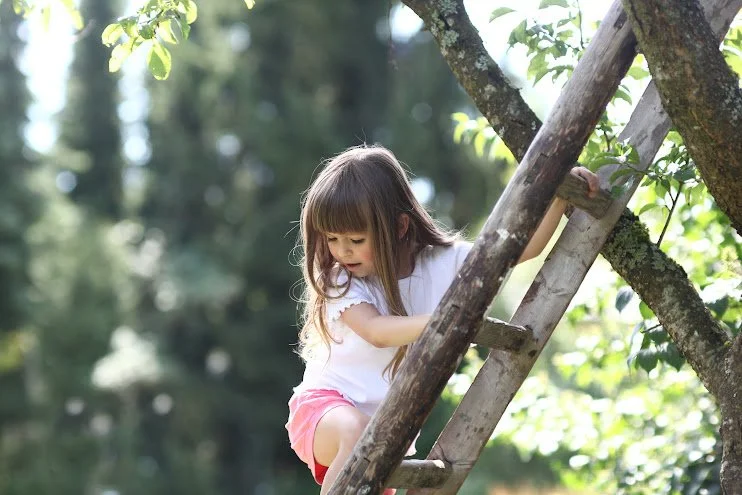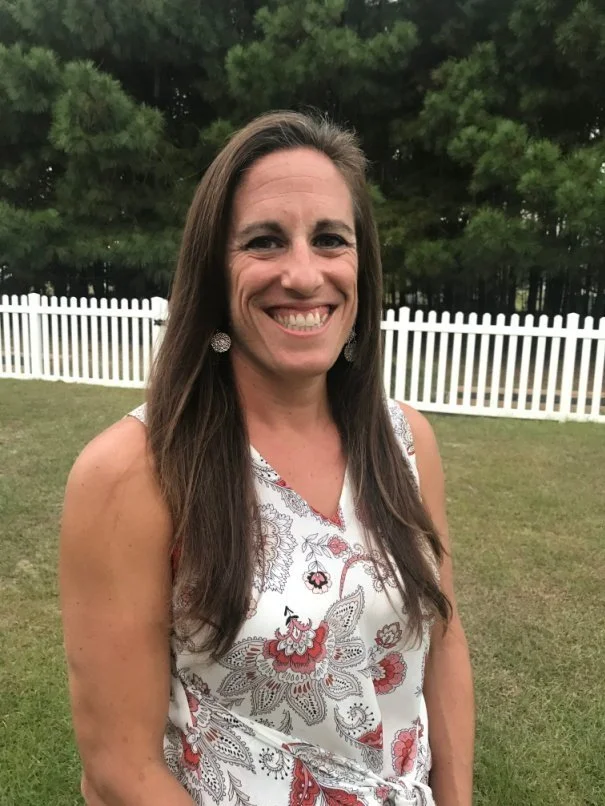Merging Occupational Therapy with Waldorf Homeschooling
Enjoy this special piece fromWaldorfish guest writer, Kristin Palen!
She’ll be looking at how to support your child using a Waldorf inspired, holistic learning approach from an occupational therapy perspective.
What is an Occupational Therapist?
An Occupational Therapist (OT) helps people of all ages participate in purposeful and meaningful activities through the therapeutic use of occupations. A child’s occupations are embedded in play!
Waldorf education and OT therapy agree: play is powerful!
Think of the developmental skills that encompass play: sensory processing, self regulation, sensory motor, executive functioning, perceptual motor, gross and fine motor skills. What are these skills essential for: effective learning!
OT is holistic, individualized and child centered - treating their mind, body and soul. OT utilizes evidence-based practices with assessment, clinical reasoning and task analysis to facilitate a child’s successful participation in their occupations by adapting, modifying, and enhancing the environment and task to foster independence.
Blending OT and Homeschooling
I truly love being an OT. The mix of science, human connection and thinking outside the box gets my creativity flowing!
When we first began homeschooling 7 years ago , I structured our day similar to an OT session. I developed a daily rhythm balancing calming with alerting multi sensory activities, attuning to my child’s needs. My child gravitated towards outdoor exploration, thus much of our day was spent outside encouraging open ended play. Our schedule was created with intention being cognizant of over stimulation. (By the way, if you’re wanting some support in your OWN homeschool planning, click here!)
Doesn’t this sound similar to Waldorf?
At the time, I had a basic understanding of Waldorf philosophy. When I dove into the foundations, I discovered rhythm was at the forefront and reaching the whole child through their head, heart and hands. This was what I was already naturally creating!
“OT and Waldorf Education seamlessly blend together in a harmonious manner using a holistic approach to facilitate connection, bonding, and creative exploration. ”
Steiner said it himself, “Where is the book in which the teacher can read about what teaching is? The child themselves are the book.” (Steiner, Rhythms of Learning). The beauty of homeschooling is curating and individualizing a curriculum for your child, which is the essence of OT!
Fast forward 5 years, I have two children ages 10 and 4 who I have been homeschooling using a Waldorf inspired approach, with added OT flare!
Play doesn’t need to be complicated- let your child be the guide!
So you might be wondering how this can help you if you are not an OT?
I will demonstrate how to utilize a holistic approach in your homeschooling rhythm to facilitate successful learning with four guiding principles to follow when devising your lesson plans. This will ensure that you are using a child centered approach to customize any curriculum specifically for your child.
Place connection at the forefront.
Waldorf homeschoolers are masters at holding the space. We attune to our child’s needs, creating flexibility in our rhythm. We adjust our presence to the ebb and flow of our child’s emotions enabling them to feel in control and connected. If we notice our child is resistant or withdrawing from a lesson it is our responsibility to investigate what is underlying the behavior. Then we can make adjustments to facilitate emotional regulation, which in turn will improve their overall engagement and interest.
Use interest led learning strategies.
Naturally weave your child’s interests directly into the lessons. Think about what is motivating, their passions, and what sparks their creativity; create lessons around those interests. Then they can be fully immersed and absorb the lesson. For example, my son is interested in woodworking. Our lessons incorporate this; our main lesson books may not be as filled as others, but he is motivated and participating in experiential learning activities.
Incorporate your child’s strengths.
Set up your child for success by gearing your lessons around your child’s strengths. What is their learning style; are they a kinesthetic, visual, or auditory learner, etc. and how can you utilize these strengths to optimize their engagement? Observe them closely and their sensory preferences. For example, decide if they are more inclined to seek out movement with kinesthetic activities, tactile (touch) input, visual demonstrations, or through auditory input with singing. If your child is more focused and attentive with specific sensory activities, make those a priority in your lessons.
Adapt the lesson and environment to your child’s needs.
Think about how you can adapt the environment and lessons to optimize your child’s learning. How can you structure your daily rhythm and lesson plans to support your child? Your child may benefit from shorter lessons throughout the day; they may be more regulated doing lessons outside; they may be more motivated if lessons involve playing games, adjust accordingly.
The emphasis above is to focus and connect with the child in front of you! Try not to get caught with what they “should” be doing, instead follow Steiner’s advice, meet them where they are, let that guide your lessons.
We want our children to feel connected with themselves, with us and their environment so they can be confident to let their minds soar. This instills the confidence to face challenging and unpredictable life experiences. If a child seems uninterested, reluctant, or bored with an activity, search for direction with the guiding principles above.
Try placing connection with your child at the forefront of your daily routine- you’ll be amazed at what comes!
“The basis of Waldorf Education is to create independent and creative thinkers. We want to be cognizant of the whole child by problem solving how to adapt, modify, customize and facilitate an experience that will empower our children to guide their lifelong learning! ”
Following these guiding principles will lead you in the direction of bringing meaning, purpose and joy to your child; my ultimate goal as an OT!
How to connect with Kristin:
Kristin Palen, OTR/L is homeschool mom and an occupational therapist with over 19 years of experience solely in pediatrics. Kristin is the owner of Coastal Connections Pediatric Therapy, in the Outer Banks North Carolina. Her practice provides direct nature based occupational therapy services, virtual parent coaching and masterclasses coming soon. Kristin’s areas of interest and specialty are sensory integration, emotional regulation, and nature based occupational therapy. Being part of a neurodiverse family Kristin particularly enjoys supporting and coaching fellow neurodiverse homeschool families to adapt, accommodate and meet the needs of their unique children.
Website: www.coastalconnectionsot.com



